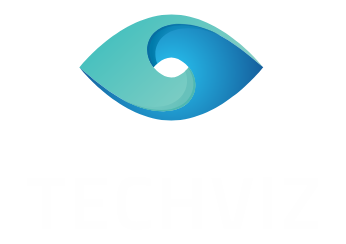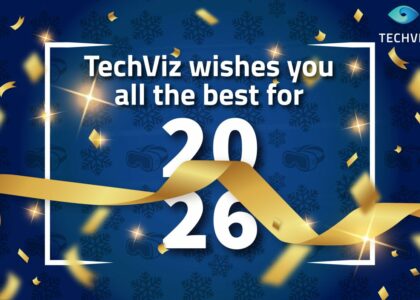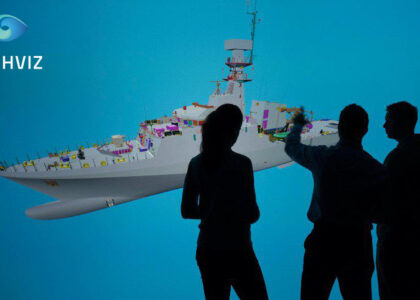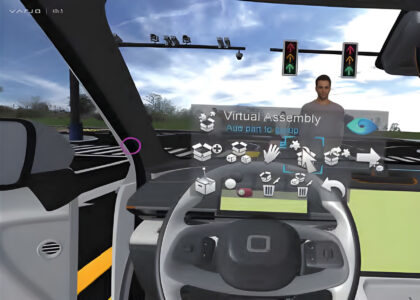[vc_row full_width=”stretch_row_content” full_height=”yes” equal_height=”yes” font_color=”#ffffff” bg_color=”#051c2c”][vc_column][vc_empty_space][vc_empty_space][vc_column_text]
Read our interview of Jason Konrath – Xsens Product Manager, about Xsens and TechViz powerful combination.
[/vc_column_text][vc_empty_space][vc_empty_space][/vc_column][/vc_row][vc_row font_color=”#194f90″][vc_column][vc_empty_space][vc_column_text]Please present yourself, what is your role in the company?
I am Jason Konrath, and I am the Product Manager of 3D Body motion within Xsens.
Could you introduce Xsens in a few words?
Xsens is a 3D motion tracking technology. Its sensor fusion technologies allows an interaction between the physical and digital world. Its applications include health/clinical, sport, ergonomics and 3D character animation. The advantages of Xsens is that you don’t have to install any camera to track things, and the trackers are more convenient than any traditional optical trackers as they consist on small sensors placed on the user. And it is also quicker to setup Xsens.
Why did you choose TechViz as a vr software partner?
TechViz is a strong player in combining data, without any data conversion, from several sources into one environment and visualize it in different ways (normal screen/powerwall/cave/HMDs). You just have to load your CAD model and you can visualize it instantly in virtual reality. Xsens integrates with major software packages and by adding TechViz, our customer can work with over 200 software packages. Plus, with the integration into TechViz, Xsens’ customers can up their game in their design verification projects in a high-tech, but still easy to use end solution, and perform their analysis in a more realistic and therefore more effective way.
How often do you use your technology with TechViz?
We plan to use TechViz as often as possible to our commercial demos and at our worldwide events.
We mainly aim to advise Xsens’ potential customers to use TechViz in case they are involved in virtual design verification, since we believe TechViz may offer a high tech end solution once integrated with MVN and TechViz is finalized. [/vc_column_text][vc_empty_space][vc_column_text]What part does technology (3D technology in particular) play in your process?
An important part, as we can now make adjustments in the design process in VR before making the actual product, saving time and money.[/vc_column_text][/vc_column][/vc_row][vc_row full_width=”stretch_row_content_no_spaces” font_color=”#194f90″][vc_column width=”1/2″][vc_single_image image=”53295″ alignment=”center”][/vc_column][vc_column width=”5/12″][vc_empty_space][vc_column_text]Let’s talk about virtual reality!
You recently became a Technological Partner of TechViz: What made you move towards Virtual Reality? In other words, why did you want to use an immersive visualization tool?
We decided to turn to VR because, coupled with our technology, it brings added value to customers in the automotive and manufacturing sectors. Both technologies enable a synergy to perform ergonomic studies, with direct benefits to the customers.
Could you describe the products compatible with VR that you have?
We have the Xsens MVN body tracking which is fully compatible with VR. Hardware setups includes the MVN link in which the sensors are located in a lycra suit connected via wires and to a body pack, which outputs at 240Hz; while the MVN Awinda has a wireless set-up that is held in place on the segments with straps and outputs at 60 Hz. Such benefits of a wireless setup potentially allow quick changeover times between participant set-ups.
Which 3D applications do you use?
We do applications in various forms of 3D body motion, including ergonomics, biomechanics, sports science, health and clinical, musculoskeletal modelling and 3D character animation.[/vc_column_text][/vc_column][vc_column width=”1/12″][vc_empty_space][/vc_column][/vc_row][vc_row full_width=”stretch_row_content_no_spaces” font_color=”#194f90″][vc_column width=”1/12″][vc_empty_space][/vc_column][vc_column width=”5/12″][vc_column_text]Who will be using Xsens MVN body tracking with TechViz software?
Examples of end users with these applications may include, but not limited to: Personnel in manufacturing plants to research efficiency, ergonomics and safety of factory workers on process lines; or engineers designing new equipment/objects to interact with their designs in a virtual environment for design verification prior to the equipment being built.
Which department of Xsens is using Xsens MVN body tracking and TechViz? Was it difficult for them to understand how to work with the software?
The sales and support team within the 3D Body Motion department is using the integration of Xsens MVN and TechViz, to provide a smooth and high tech solution to customers involved in virtual design verification and ergonomics. At this stage it is still relatively new, but from the few people that have tested it, it seems to have big potential and ease of use.
[/vc_column_text][/vc_column][vc_column width=”1/2″][vc_single_image image=”53269″ alignment=”center” image_hovers=”false”][/vc_column][/vc_row][vc_row font_color=”#194f90″][vc_column][vc_empty_space][vc_column_text]What aspect in the design do you need to visualize, check and validate?
It’s generally used to validate with the Customer milestones of a project. Some examples include:
Measuring what happens when a user enters a vehicle. Validating ergonomics inside a virtual vehicle to see if the user sits comfortably and ergonomically appropriate.
Comprehensive analysis of postures of workers in the assembly line of a factory have been analyzed in the initial stages of product development. We are also able to check accessibility of a dashboard and commands (in a vehicle, plane, tractor cabine etc.) in virtual reality.
There’s a lot of talk these days about VR Collaboration. Would you say your Xsens MVN body tracking can be used as a collaborative tool or in a collaborative project?
Absolutely, the Xsens MVN body tracking system can indeed be used in collaborative projects. Moreover, it can be visualized thanks virtual softwares such as TechViz and 3D visualization tools provided by virtual systems such as HMDs, powerwalls or immersive large system.
Are you satisfied with this partnership? Can you assess your return on investment?
We are very satisfied with our investment: we made a great number of commercial demonstrations during Laval Virtual 2018 show. [/vc_column_text][vc_empty_space][/vc_column][/vc_row][vc_row full_width=”stretch_row_content_no_spaces” font_color=”#194f90″][vc_column width=”1/2″][vc_single_image image=”53297″][/vc_column][vc_column width=”5/12″][vc_empty_space][vc_column_text]Unfortunately, the system is dedicated for R&D at this stage, so it may be too early to assess ROI on solution based in it.
Your future plans involving VR?
We mainly aim to advise Xsens’ potential customers to use the capabilities of TechViz in virtual reality in the instance where customers are involved in virtual design verification.
Last question: are you satisfied with TechViz team, TechViz service and support?
Is there anything we can do to improve your experience with us?
Currently, we are very pleased with the services that have been provided, there is a common goal between our two companies, and I have no doubt that this is a collaboration that contains a lot of merit and potential to improve many industrial applications.
[/vc_column_text][/vc_column][vc_column width=”1/12″][vc_empty_space][/vc_column][/vc_row][vc_row][vc_column][vc_column_text]






